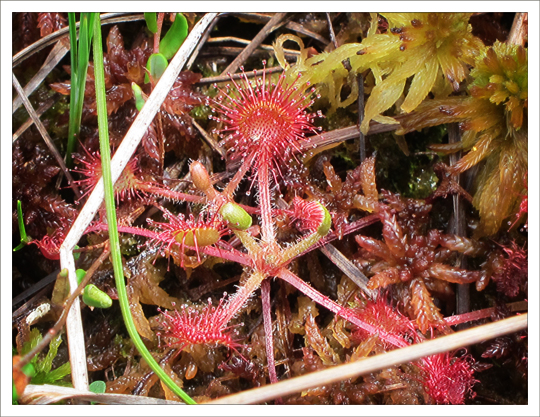While at the Wild Center this weekend, one exhibit in particular caught my eye: carnivorous plants (if you can’t tell from my previous post, I really like plants…). The exhibit featured a massive sculpture of a pitcher plant with a to-scale version displayed next to it. Aside from the classic Venus Fly Trap, I didn’t know of any other carnivorous plants that existed. I especially didn’t know I could find one right in the Adirondacks. The pitcher plant uses its red “lips” in order to attract insects. The insects then follow a trail of nectar that leads down the tube of the plant, not knowing that they will be unable to escape due to downward pointing hairs lining the tube. Eventually, the insect falls into the plant's pool of digestive enzymes that sit at the very bottom of the tube. Pitcher plants don’t exclusively eat insects - they occasionally eat frogs! Creepy, right!?
As I continued to look at the exhibit, I was shocked to find that there was more than just one carnivorous plant in the Adirondacks. The Roundleaf Sundew gets its name from the dew-like droplets on its leaf hairs. When insects come to investigate the sweet smelling leaves, the mucus traps them, and the leaf curls around the prey releasing a digestive enzyme that allows them to absorb the nutrients of the insect. This video demonstrates the process.
Roundleaf Sundew (Paul Smiths VIC)
http://adirondackvic.org/Adirondack-Wildflowers-Roundleaf-Sundew-Drosera-rotundifolia.html
But that’s not all! There is third carnivorous plant present in the Adirondacks- the Bladderwort. These plants either float on the surface of the water or sit on waterlogged banks. The “bladder” of the plant has a lid on it, which closes to create a vacuum. Sensitive hairs line the outside of the plant, so when prey (which can include water fleas or even small tadpoles) passes by, the plant opens its lid. The vacuum pulls in water and any unlucky creature nearby. Once inside the bladder, digestive enzymes and bacteria begin to digest the prey. This video shows the process (skip to 45 seconds to see the action).
So why do these scary, sci-fi plants even exist? These types of plants mainly live in bogs. As we talked about in class, bogs are acidic and lack nutrients (and the few nutrients that are present are taken up by the sphagnum). In order to survive in such nutrient poor conditions, the plants supplement the nutrients available in the soil with the nutrients from insects and other prey. Another way in which plants are totally awesome!
So why do these scary, sci-fi plants even exist? These types of plants mainly live in bogs. As we talked about in class, bogs are acidic and lack nutrients (and the few nutrients that are present are taken up by the sphagnum). In order to survive in such nutrient poor conditions, the plants supplement the nutrients available in the soil with the nutrients from insects and other prey. Another way in which plants are totally awesome!
Works Cited
"Adirondack Wildflowers: Pitcher Plant (Sarracenia Purpurea)." Adirondack Wildflowers. Paul Smith's College, n.d. Web. 30 Sept. 2015. <http://adirondackvic.org/Pitcher%20Plant%20--%20Sarracenia%20purpurea.htm>.
"Adirondack Wildflowers: Roundleaf Sundew (Drosera rotundifolia L.). " Adirondack Wildflowers. Paul Smith's College, n.d. Web. 30 Sept. 2015.
Rathbone, Ellen. "Bladderworts: Pretty, But Deadly Adirondack Natives" Adirondack Almanack. Accessed: 30 Sept 2015.
<http://www.adirondackalmanack.com/2010/08/bladderworts-pretty-but-deadly-adirondack-natives.html>.


No comments:
Post a Comment